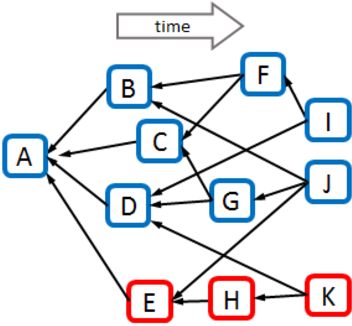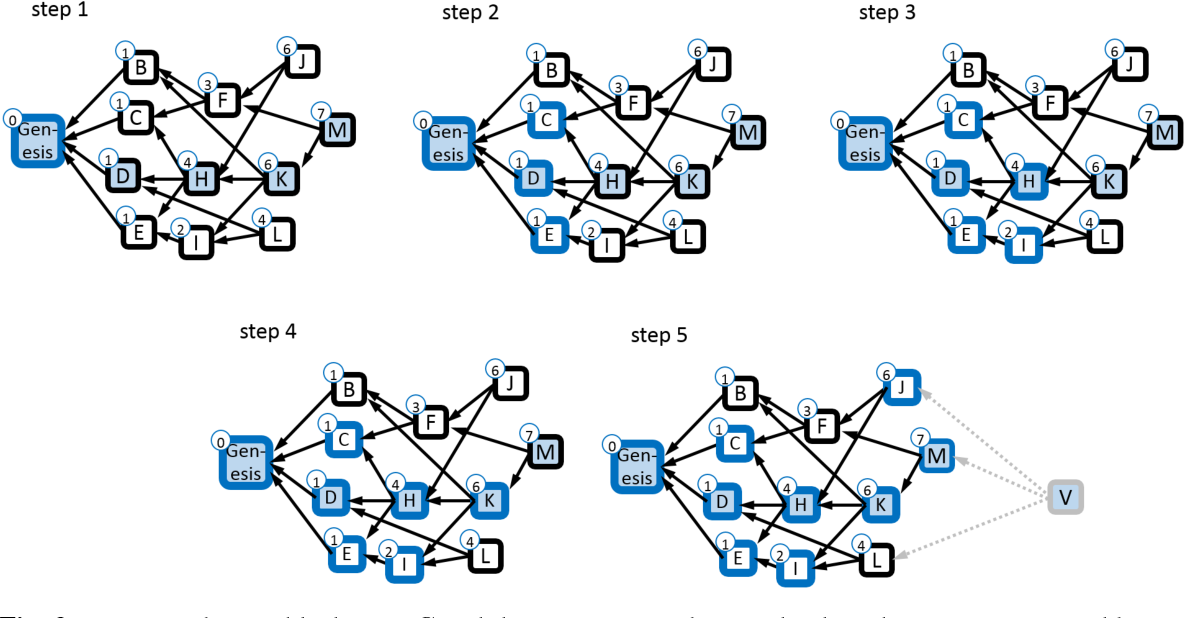KAS (Kaspa): The Fastest PoW Layer1 in the World
In the article Consensus: The Law of the Blockchain World, we provided a detailed introduction to the common consensus mechanisms in the industry. As Proof of Stake (PoS) and Proof of Work (PoW) remain the mainstream choices, the debate over which one is superior has been ongoing for a long time. The Ethereum transition to PoS, in particular, has led to a more pessimistic view of PoW’s performance. Many new public chains have opted for PoS or its variants, while others including DCR (Decred) and CFX (Conflux) have chosen the hybrid PoW and PoS consensus mechanism.
As an emerging public chain launched in 2021, the Kaspa (KAS) team clearly does not agree with this viewpoint. They believe that PoW is a decentralized system in a real sense. Many blockchain projects have sacrificed decentralization in pursuit of scalability and high performance, ignoring that decentralization is the core of cryptocurrency. Therefore, Kaspa insists on addressing scalability and efficiency issues within PoW to reduce the possibility of manipulation by centralized institutions.
With the GHOSTDAG protocol, Kaspa effectively balances high TPS (transactions per second) and security, making it the fastest, open-source, decentralized, and fully scalable Layer1 in the PoW domain. This article will give you a window on the Kaspa protocol, including its background, technology, current development, and future plans.
Origin of Kaspa
Yonatan Sompolinsky, Kaspa’s founder, has achieved notable success in academia, with his papers widely circulated and cited thousands of times. He is also an early participant in the blockchain industry. In 2013, Yonatan co-authored the GHOST protocol with his mentor Aviv Zohar. This protocol was later referenced by Ethereum to address security issues caused by forks.
In his paper, Yonatan introduced the concept of a Directed Acyclic Graph (DAG) for blockchain networks. Subsequently, Yonatan focused on research related to blockDAG and founded DAGlabs in 2018. He published the paper PHANTOM: A Scalable BlockDAG Protocol, which further upgraded the GHOST protocol.

Example Diagram of blockDAG
DAGlabs initially intended to develop and sell OPoW ASIC miners. However, since the OPoW technology was not fully-fledged at that time, the business plan was eventually abandoned, and DAGlabs disbanded. Some former members of DAGlabs, who believed in the future of PoW and blockDAG, decided to jointly develop Kaspa, aiming to create a blockDAG project that achieves the fastest, most scalable, and secure solution without compromising decentralization.
Upholding the spirit of community autonomy in cryptocurrencies like BTC, LTC, and XMR, Kaspa adheres to an open-source approach and adopts a 100% fair token distribution model, without any pre-mining or pre-sale. KAS can only be obtained through mining, with its monthly issuance reduced every month and production halved annually.

The equation for calculating the monthly issuance of KAS

The issuance schedule of KAS
Technology Behind Kaspa: GHOSTDAG Protocol
Compared to Bitcoin, which also uses PoW, Kaspa is a hundred times faster. Since its launch, Kaspa’s blockDAG network has generated multiple blocks every second and fully confirmed transactions in 10 seconds. Its future goal is to increase to 32 blocks per second, and eventually 100 blocks per second. Network acceleration also means an increase in the number of blocks generated by miners, contributing to a more decentralized distribution of hashing power.
Kaspa’s fast speed is attributed to the GHOSTDAG protocol. In 2021, Yonatan made improvements based on the PHANTOM protocol and published the paper titled PHANTOM and GHOSTDAG: A Scalable Generalization of Nakamoto Consensus.
Bitcoin ensures security through the “longest chain” rule, which means that there needs to be a certain time interval between blocks to allow all honest nodes to receive and confirm new blocks. DAG’s topological structure, compared to the traditional linear blockchain, enables multithreading and significantly accelerates block processing. Many public chains, such as AVAX-X and Fantom, now adopt DAG structures.

Kaspa’s DAG demo

Demo of a linear blockchain structure
The challenge with DAG structures is how to ensure network security in the context of parallel blocks. In his paper on the SPECTRE protocol, Yonatan demonstrated that malicious blocks have lower inter-connectivity compared to honest ones. Therefore, the protocol can distinguish between honest and malicious blocks by evaluating the inter-connectivity between blocks.
The GHOSTDAG protocol uses anticone (X) to represent a set of blocks unrelated to block X, and set S represents the honest nodes. The more intersections between anticone (X) and set S, the lower the inter-connectivity with honest blocks. The protocol selects a parameter, commonly referred to as k, as the criterion. In popular DAG protocols, k is set to 3, meaning blocks with typical anticone sizes not exceeding 3 are considered honest blocks.
As shown in the figure below, honest blocks are colored blue, while malicious blocks are colored red. anticone (C)= {B, D, E, H, I, K). Block C has three blue blocks in its anticone (B, D, I), so it is colored blue. By contrast, anticone (E)= {B, C, D, F, G, I}. block E admits six blue blocks in its anticone (B, C, D, F, G, I), so it is colored red.

However, this classification process requires solving an NP-hard problem, resulting in prohibitive computation. The GHOSTDAG protocol ingeniously uses a greedy algorithm, which can provide the optimal classification solution at the fastest speed. The details are shown as below:

1. The algorithm greedily selects the longest path (genesis, D, H, K). It first visits D and adds the genesis to the blue set.
2. It then visits H and adds the past (H), namely, blocks C, D, and E to the blue set after verifying that they are honest blocks.
3. Next, it visits K and adds the honest blocks H and I in past (K) to the blue set. Although B is in past (K), but anticone (B)={C, D, E, H, I, L},it has 4 blue blocks in its anticone (C, D, E, H). So block B is determined to be a malicious block and not included in the blue set.
4. It visits M, and after evaluation, the block K in past (M), is considered an honest block and added to the blue set, while F in past (M) is considered a malicious block.
5. Finally, it visits the block virtual (G) = V and adds the honest blocks M in past (V) to the blue set, leaving L in past (V) away due to its large blue anticone, and leaving J in past (V) away because adding it would cause I to suffer too large a blue anticone (it already has C, D, and H in it).
After obtaining the blue set, the protocol provides a linear ordering in a topological manner, ultimately connecting the honest blocks in sequence. This ensures the immediate confirmation and security of parallel blocks.
The Future of Kaspa: DAGKNIGHT and Smart Contracts
The Kaspa community and developers are quite active. They keep updating the protocol while vigorously expanding the daily use cases of KAS. In October 2022, Yonatan published a new paper titled The DAG KNIGHT Protocol: A Parameterless Generalization of Nakamoto Consensus, introducing an improved version of the existing GHOSTDAG called DAGKNIGHT. DAGKNIGHT is the fourth upgrade of the GHOST protocol (previous upgrades: SPECTRE, PHANTOM, and GHOSTDAG).
As Kaspa continues to evolve, it has achieved new records. In Testnet 11, Kaspa reached 120,000 TPS at the peak, with 10 block confirmations completed in 4-10 seconds, setting the fastest confirmation speed for PoW Layer1. Recently, Kaspa has been undergoing a rewrite in the RUST programming language, which is currently in the testing phase. After the RUST language rewrite, Kaspa will upgrade the DAGKNIGHT protocol, further enhancing Kaspa’s performance. Subsequently, smart contract development will be initiated, making Layer2 and DeFi development on Kaspa much more effortless.
Users can now manage their KAS in CoinEx Wallet. Download the app and try it out: https://wallet.coinex.com/download
[More Information]
Kaspa website:https://kaspa.org/
Market cap ranking:https://coinmarketcap.com/currencies/kaspa/
Kaspa whitepaper:https://eprint.iacr.org/2018/104.pdf
Buy KAS: https://www.coinex.com/exchange/KAS-USDT
Manage KAS:https://wallet.coinex.com/download








